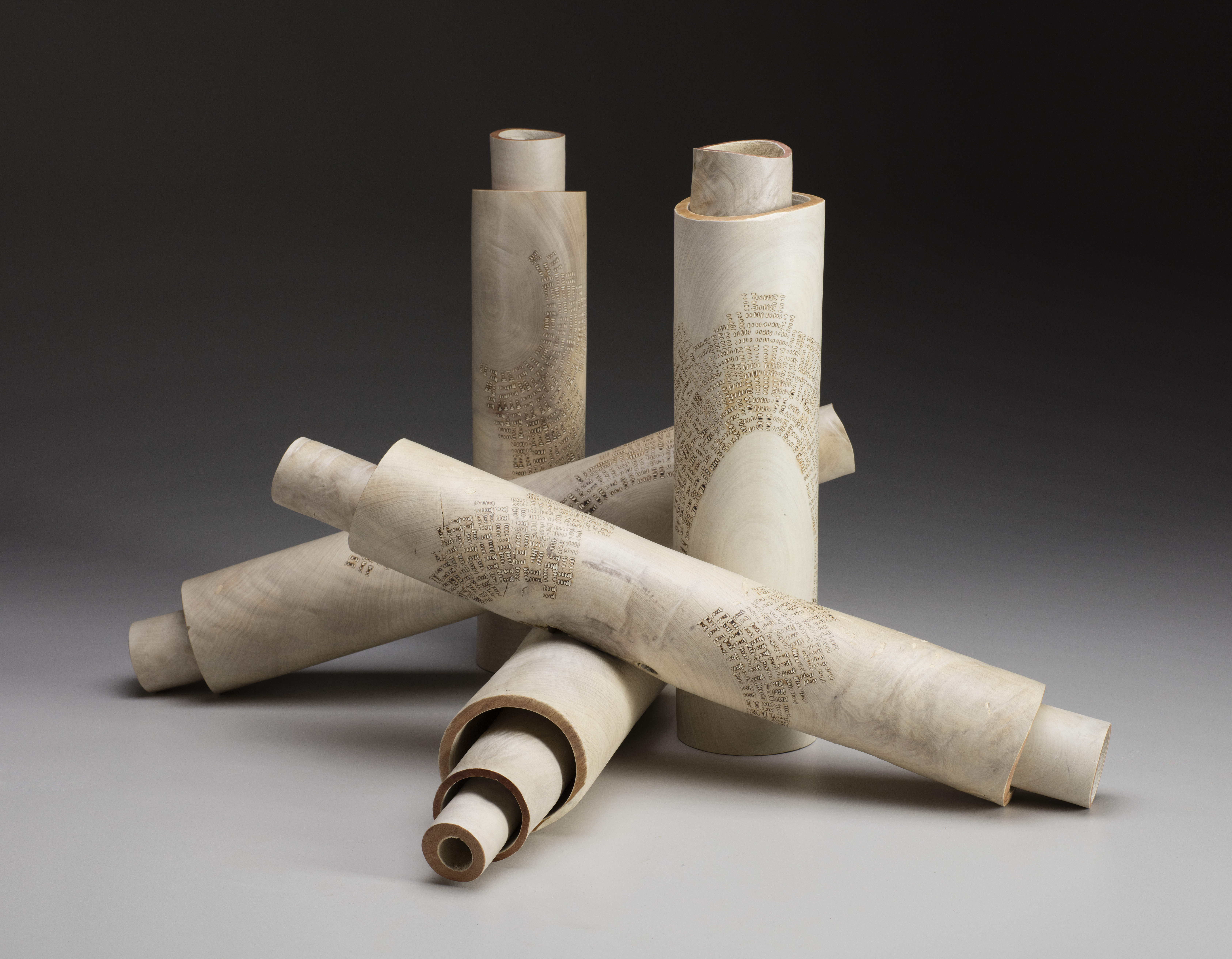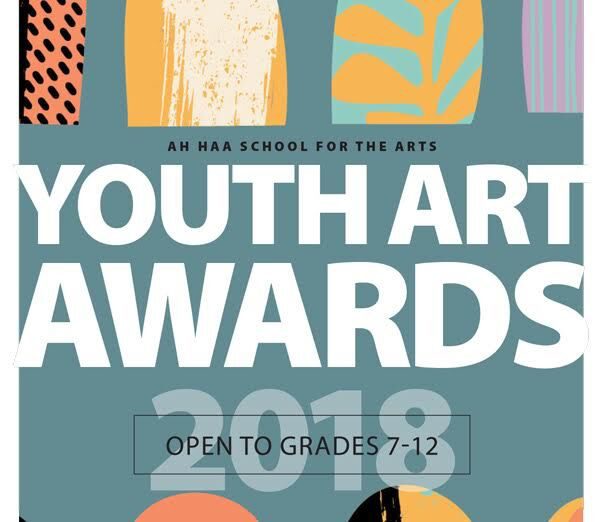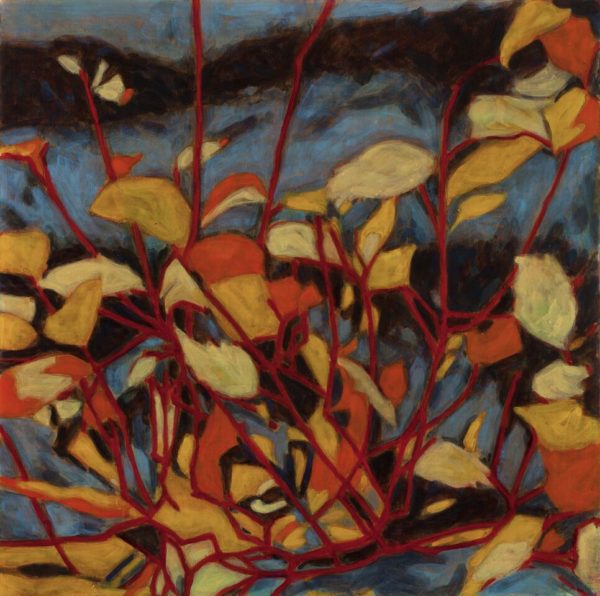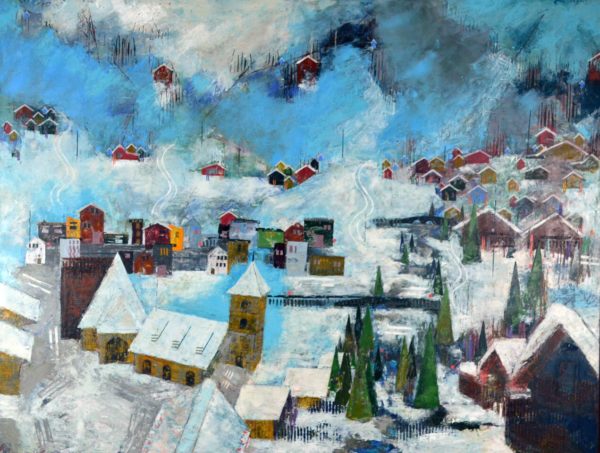
24 Feb March Art Walk: Burchard & Crowell at Telluride Gallery & More
Telluride Arts’ First Thursday Art Walk is a festive celebration of the art scene in downtown Telluride for art lovers, community, and friends. Participating venues host receptions from 5 –8 p.m. to introduce new exhibits. Complimentary gallery guides are available at all the venues and offer a self-guided tour.
Highlights of the March 2018 Art Walk include Christian Burchard, Rebecca Crowell, studio jeweler Barbara Heinrich and master pastelist Bruce Gomez at the Telluride Gallery of Fine Art; Youth Art Awards at the Ah Haa School for the Arts; Mara Manning “Remixing Dreams” at Telluride Arts’ HQ; and Trina Burmiller’s “Centenary: Selections from 100 Paintings for 100 Years” at Telluride Arts’ Gallery 81435.
Please scroll down for further details.

Books, by Christian Burchard
Fiddling is on a long list of vocations and avocations on Christian Burchard’s colorfully quirky resumé, which also includes making goat cheese and Tuvan throat singing. Burchard’s day job, however, is sculpting.
In fact, Burchard has never met a piece of wood he did not like – though he heavily favors Pacific Madrone, which he uses exclusively to create his whimsical art.
“I have been working with wood for most of my life. We are comfortable with each other and I value the connection immensely. I am curious about what is inside, how it works. I am always looking for the gifts wood has to offer. At times I am awed by its beauty and its history, the tracks that the passing of time have left. I am driven to expose that beauty, to make it shine through. At other times I am more fascinated with its inner structure, its more subtle form and spirit,” explained the artist.
Born in Hamburg, Germany in 1955, Burchard has been living in the United States since 1978. In 1982, he opened his Cold Mountain studio on the outskirts of Ashland, Oregon, where the place remains the architectural equivalent of a dog strapped to the roof of his car. The higgledy-piggledy complex seems out of place, but the wooden structures that make up the landscape just thumb their noses at the trophy homes that surround them.
In the beginning, Burchard’s focus was on furniture and interiors, having started out his professional life as a furniture-maker’s apprenticeship in Germany in the mid-1970s. After studying sculpture and drawing at the Museum School in Boston and the Emily Carr College of Art and Design in Vancouver, BC., Burchard’s artistic attention shifted to woodturning and sculpture. He now moves between vessel-oriented forms and sculptural turning.

Scrolls, Christian Burchard
When we visited the studio six years ago, Burchard was a charming host who appeared to be very much in touch with his inner Peter Pan. Toys were everywhere, including the musical instruments he was making (or had collected), as well as baby ducks (in a bathtub) and goats (outside).
Also on display were his world-famous baskets and “books,” each one’s form a direct result of the underlying grain structure of the wood from which it was fashioned; each one, according to Burchard, with its own “personality.”
Burchard’s latest show at the Telluride Gallery of Fine Art will feature variations on the theme of the artist’s signature pieces: books and baskets, plus wall sculptures, torsos, scrolls and serrated arching shapes.
Burchard’s art has been included in most of the major turning-related exhibits of the last 20+ years and is exhibited and collected widely throughout the U. S., including, of course, in Telluride.
Rebecca Crowell:
Transforming landscapes into metaphors, spiritual or otherwise is nothing new, especially (though not exclusively) in the realist tradition. Artists who painted outdoor scenes, especially of the early American West, often expressed a rapturous identification with our country’s broad vistas and towering mountains. For example, in the 1880s, Albert Bierstadt and Frederic Church went way over the top in their monumental depictions of cathedral-like cliffs and the Golden Glow that enveloped a scene. Small wonder. At the time, being a landscape painter had political and moral overtones. As art historian Robert Hughes observed in his “American Visions”: “If the presiding metaphor of the landscape experience was that of a God as supreme artist, it need only be a short step to the idea that artists were seers or priests…”
The goal of modernists such as Rebecca Crowell is, perhaps, less lofty, but her abstract landscapes could easily be interpreted as soulscapes that suggests a fluid balance between abstraction and deliberate, if obscured, references to the natural world she clearly venerates – like those 19th-century art world titans. Plant life, earth, rocks and light show up in her images as ghost memories of magical moments, pushing one critic to describe Crowell’s paintings as “memory maps.”

Rebecca Crowell’s “Astir.” Does this vibrant painting excite the eye as its title suggests?
Crowell’s work is the results of a physically demanding, sometime violent process of layers that are scratched, eroded and dissolved to reflect what occurs naturally in the rugged landscapes she loves. Nevertheless her paintings feel quietly intense, almost Zen-like. Like the minimalist canvases of Agnes Martin to whom she is compared, Crowell’s spare but dense work seems tethered to spirituality.
Assessing her images, it becomes evident that Crowell believes in the transformative powers of art, the ability of a painting to conjure emotions such as happiness, love, beauty, perfection, as well as the experience of a return to childhood vision, emotions we are all capable of conjuring especially when out and about in the healing presence of Mother Nature.
“Many ideas and images pass through my mind as I paint,” Crowell observes: “The passage of time and aging, the accumulation – of experience, the symbolic and visual aspects of natural processes including stratification, collapse, compression: the ephemeral marks that people leave behind,” the artist told Huff Post art critic John Seed.

Rebecca Crowell’s “Ancient Site.” Do you see a waterfall or a fissure in a cliff in this painting? Something else?
Seed went on to observe:
“Like other artists who have both abstracted the landscape and used it to feed their souls – including Richard Diebenkorn and Agnes Martin – Crowell is extremely sensitive to the nuances of time and place. She is the same person wherever she goes, but her work changes when she travels to Sweden or Ireland. During a residency in Ricklundgarden, Sweden, Crowell drank in the textures and colors of ice and snow, rocks, lichen, and birch bark. In Ireland, she studied crags, bogs, rocks and ocean spray and let them come through her into a series of richly evocative semi-abstract fields of color. Crowell’s ‘Atmospheric’ series features veils and tones that evoke specific places seen through the tendency of memory to obscure specific forms.
“Rebecca Crowell’s work challenges us to travel with her and to share her sense memories. She invites us to stand with her and take in the world and its transcendent beauties slowly. As an artist she does the hard work of finding the essences that surround us so that we can stand in front of them, transfixed.”
Since earning her MFA in painting from Arizona State University in 1985, Rebecca Crowell has led a life laser-focused on making art. When she is not traveling for teaching or for artist residencies (in such places as the Catalonia region of Spain, northern Sweden, and coastal areas of Ireland), Crowell works almost daily in her studio in rural western Wisconsin, drawing major influence from those residencies and trips, as well as from her home surroundings.

Rebecca Crowell’s “Ascent.” Does this images depict the memory of a steep travel up a mountain?
Rebecca Crowell is known for her innovative painting techniques involving mixed media and cold wax, a technique that seems to blur the line between oil and encaustic painting.
To understand more about her process, you might want to read Crowell’s book. Go here for more.
Rebecca Crowell has garnered an international reputation. Her work is represented in fine galleries from Dublin, Ireland to Atlanta, Georgia; Columbia, Missouri; Chicago, Illinois; and Telluride, Colorado.
Other highlights:
Ah Haa is presenting its 2018 Youth Art Awards during the March Art Walk and throughout the month.

Ah Haa School’s Youth Art Awards honor regional middle and high school students for their creativity and interest in the arts. The school encouraged any student in grades 7-12 with a passion for the visual arts (and who attemds public school, private school, or is home-schooled in Telluride, Rico, Norwood, Nucla, Naturita, or Paradox Valley) to participate.
All submissions are featured in the exhibition. The top four works receive awards during the opening reception, from 4 – 6 p.m. Awards are announced at 5:30 p.m.

Gallery 81435 presents “Centenary: Selections from 100 Paintings for 100 Years,” an exhibit by Trine Bumiller, up during March and April.
Bumiller’s “100 Paintings for 100 Years” is a series of 100 paintings inspired by a residency during the centennial year of Rocky Mountain National Park. But the work evolved into something much greater, an immersive experience, both in practice and in installation, that points to our human need to record, remember and reflect.
The images are meditations on our relationship to nature and, through various perspectives, present a deconstructed portrait of the landscape. They advance the dialogue between abstraction and representation, resting somewhere between the two. As if between experience and memory lies the finest version of reality.

Telluride Arts’ HQ Gallery presents, “Remixing Dreams,” an exhibit by Mara Manning, up throughout March.
Mara Manning’s work is about a sense of place and memory. Her landscapes and cityscapes are not “windows” into a scene as with most traditional landscapes. Instead the artist explores the space as seen in transit, as she passed it by. Whether driving through a landscape in a car or another form of transportation, environments are often experienced only through a momentary glimpses. Bits of what we briefly saw tends to adhere to our subconscious as flattened and stacked images.
In her paintings, Manning finds herself gravitating to simple building shapes: houses, farms and warehouses spark her storytelling imagination, though personalities, expressions, and faces at times materialize from those structures. By layering the structures or by focusing on individual shapes, Manning seems to be able to conjure a feeling of place for herself and the viewer – though two viewers looking at the same painting may not identify the same place. The “where” seems to depend upon which place memories are already embedded in our minds.


Ruth Andre
Posted at 22:28h, 03 MarchRebecca Crowell’s work is lovely and the exhibit has been presented so well. Lots of room to enjoy these beautiful works.